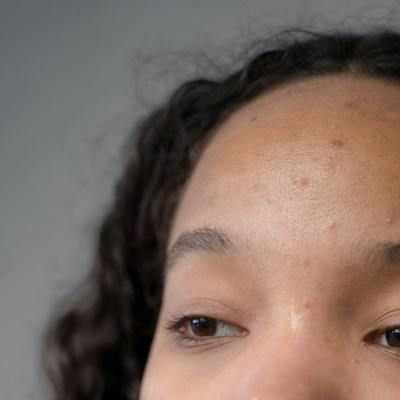Article
Accelerating Dermatology to Modern Transgender Health Care
Author(s):
Though transgender medicine has existed for over 100 years, physicians like Dr. Jackson Turbeville are still looking for opportunities to make healthcare more accessible and affordable for patients seeking treatment for a variety of dermatologic conditions.
Transgender medicine is assumed by many to be a nascent healthcare subject, and understandably so. Representation of minority groups in healthcare has always been an issue, especially in dermatology, and it’s difficult to imagine transgender patient equity becoming prioritized.
But the question isn’t whether there’s a history of transgender medicine; it's whether that history is being acknowledged. The answer to that question, explained Jackson Turbeville, MD, is complex. In an interview with HCPLive, Tubeville, a dermatologist with the University of Wisconsin School of Medicine and Public Health, said his interest in transgender medicine began late into his residency, when he first realized the gaps of care relative to cisgender patients.
“As time has gone on, more and more has been written in the dermatologic literature about what we can do as a profession to really best serve these patients," Turbeville said. "There are many institutions where they don't necessarily have an individual within dermatology with that particular expertise or experience, and so to grow that I really started to do a deep dive into the literature, what's been written and what we can best do to try to serve these patients.”
Though the prominence of literature on this subject has grown in recent years, its roots stretch as far back as the late 1800s and early 1900s, when sexologist Dr. Magnus Hirschfield established the Institute for Sexual Science in Berlin in 1919.
The institute was a singular achievement, and a refuge for what Hirschfield called “sexual intermediaries,” which included transgender, homosexual, non-binary, and gender-fluid individuals. These patients were rigorously studied and well-respected. Their presence contributed to a wealth of meticulous, groundbreaking scientific literature regarding transitional surgery, hormone therapy, sexual counselling, and public sex education.
With the Institute for Sexual Science, Hirschfield and colleagues were actively bucking against the notion that transgender patients were mentally ill or genetically inferior to “normal” people, and instead proposed that these people were not only acting “in accordance with their nature” but that they required the appropriate care and attention to do so.
It was a place of “research, teaching, healing, and refuge” that would ultimately be swallowed up by the fires of the Nazi Party-led book burnings on May 6, 1933. It was believed that more than 20,000 books were reduced to ash, making it one of the largest book burnings to occur on that day.
It wasn't until decades later in the late 1970s that the World Professional Association for Transgender Health (WPATH) would issue the first guidelines for transgender care, establishing what Turbeville said is a still-evolving document for clinicians managing transgender patients.
“More recently, the literature has focused on what we can do specifically in dermatology to help address specific needs of these patients, and it can range from managing side effects of hormonal treatments, to managing complications after surgical procedures as well, including preparation for the surgical procedures," he explained.
A substantial part of gender affirming care relates to the administration of exogenous hormones, which enable patients to feel “congruent with their inner gender identity." Transgender men, for instance, will typically receive exogenous testosterone throughout their journey.
Approximately 88-94% of these individuals will develop acne while being treated with testosterone. Fortunately, the approaches to treating these breakouts are similar to those utilized in the standard patient population, and include topical medications and oral antibiotics.
Oral contraceptive pills are also commonly prescribed in this patient group, but Turbeville noted that some patients might wish to forgo this treatment as they consider it to be “a step going backwards, in terms of their therapy." In those instances, he recommended that dermatologists discuss alternative therapeutic options such as isotretinoin, when appropriate.
Similar considerations should be made for hair loss, which has been shown to occur in two-thirds of patients who are treated with exogenous testosterone, as some patients may not wish to treat their hair loss and consider it to be an affirmation of their gender identity.
For those that do wish to address their hair loss, there are a myriad of therapeutic approaches.
“When we talk about other treatments that have been approved for pattern hair loss, specifically finasteride (Propecia), we have to realize that that is an androgen blocker,” Turbeville said. “So, when approaching therapy with it, it's important to know which patients you’re treating it and why and to go over the potential risks that may be associated with that. But certainly, the DHT blockers like finasteride and dutasteride also are potential options that could be explored medically.”
Surgical interventions such as hair transplantation, which would require hair taken from areas of higher density on the body—“The thought is that the hairs that exist in those areas are not as sensitive to hormonal influences,” Turbeville explained—and transplanting to areas of lower areas, might also be considered when treating transgender patients with hair loss, as can platelet rich plasma injections.
These options can be considered, but rarely are they made accessible to transgender patients, as they are traditionally deemed cosmetic procedures by insurance companies. It’s part of a prevailing theme in dermatology care: a life-enhancing treatment or therapy is available to the public, but isn’t covered by insurance or is minimally covered to the point where patients risk financial stability.
Turbeville stressed the role he and colleagues play as advocates for treatment access and coverage, especially among adversely affected patients.
"When we look at studies of insurance coverage for these procedures, we find that the overwhelming majority—in fact, nearly all state plans and Affordable Care Act plans—either exclude coverage fully or specifically mention non-coverage for these procedures, even under these indications because they are viewed as cosmetic," Turbeville said. "I think one of the driving forces that will change this over time is a focus on trying to affect policy where these can be covered.”
In recent years, policy initiatives have resulted in some insurance providers covering pulsed dye laser treatments for patients affected by nevus flammeus, or port wine stain, a condition estimated to affect 1.2 million people in the US.
Comparatively, acne is estimated to affect roughly 50 million Americans annually, and data have shown that the prevalence of alopecia areata has only increased in recent years.
Though it’s crucial to acknowledge transgender patients as part of a larger community, it’s also important to recognize that these patients may require certain care to enable them to establish a life and identity that are recognizable and true to them.
“I think it's a topic that many individuals feel uncomfortable discussing, or kind of delving into and I think that we should not really approach it from that mindset,” Turbeville said. “Really, this will be something that is not going away over time, and having an openness to engage in these conversations with our patients, from a perspective of cultural humility can really open the door to building a deeper doctor patient relationship when it comes to addressing these very intimate concerns.”





